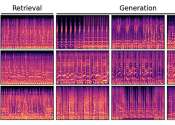New model recognizes emotions in deaf individuals by analyzing EEG signals
Researchers at Tianjin University of Technology in China have recently developed a new brain network-based framework for recognizing the emotions of deaf individuals. This framework, presented in a paper published in IEEE ...









